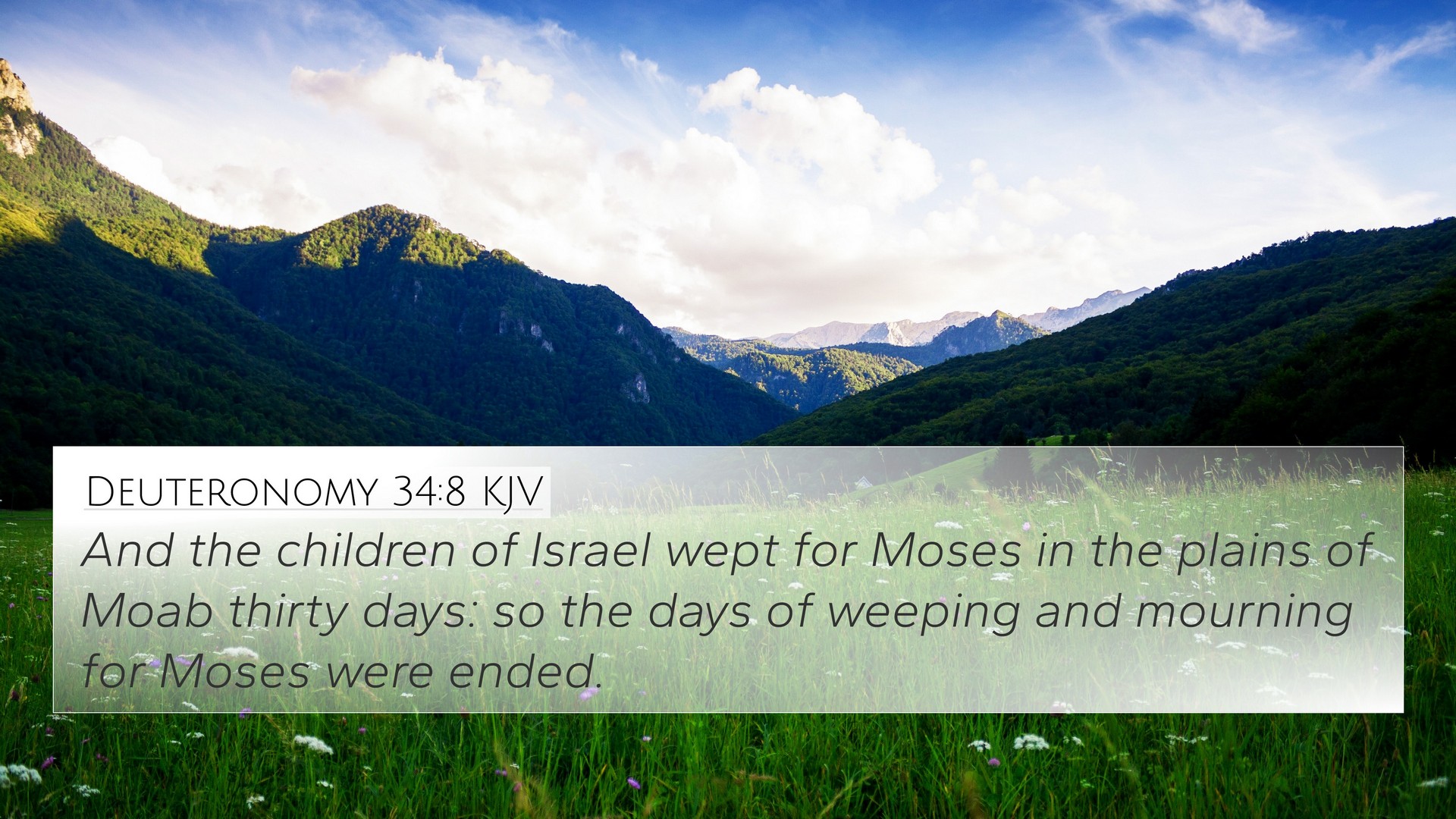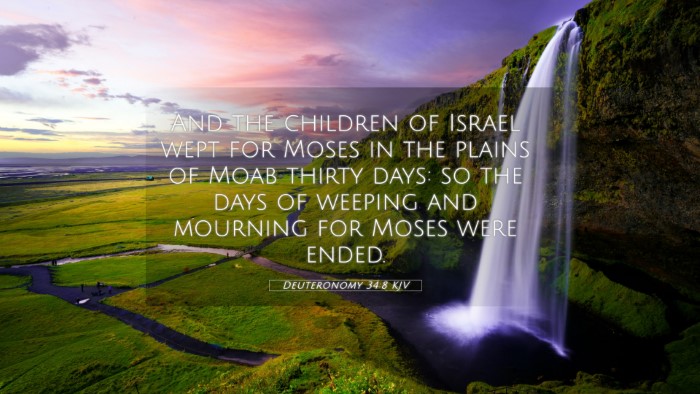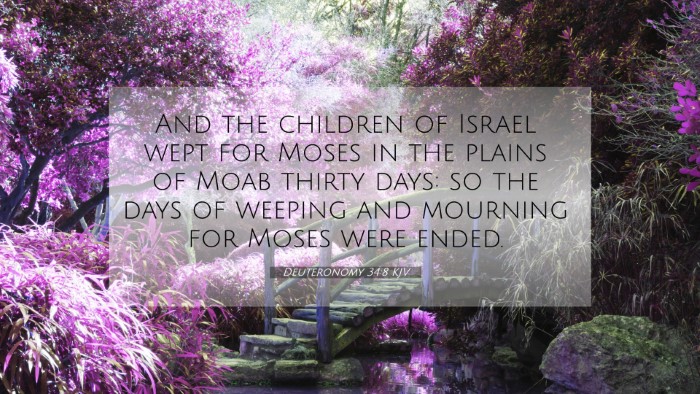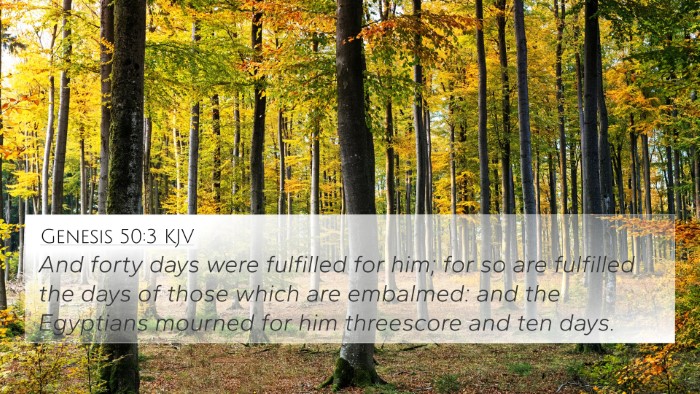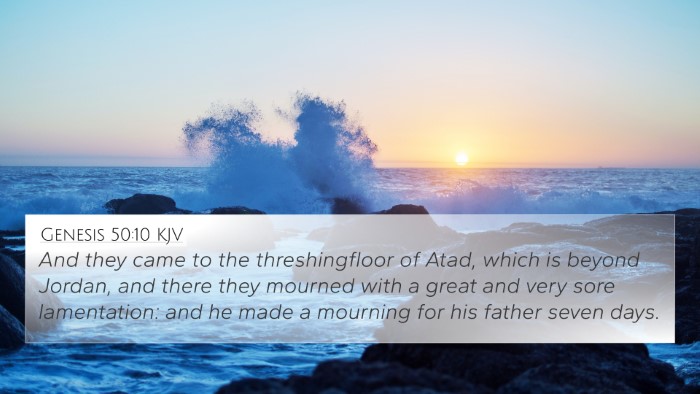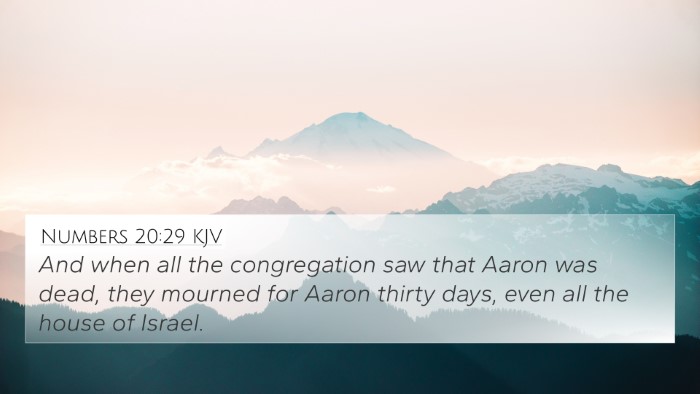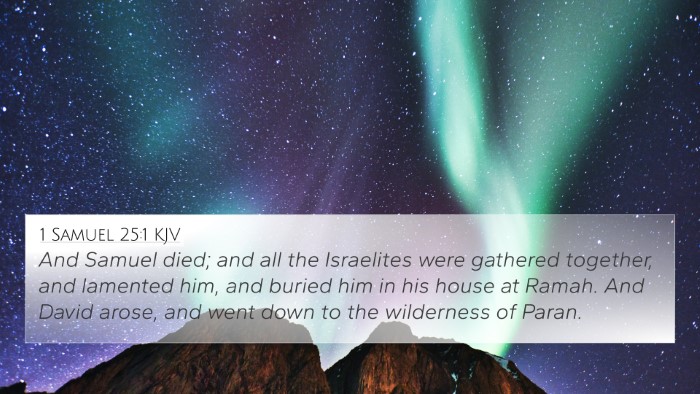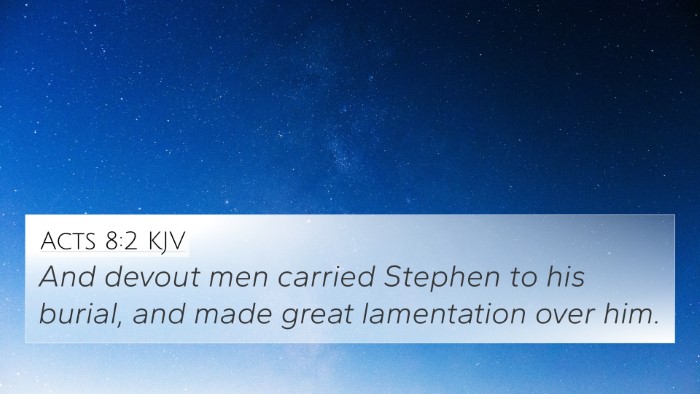Understanding Deuteronomy 34:8
Bible Verse: Deuteronomy 34:8 states, “And the children of Israel wept for Moses in the plains of Moab thirty days: so the days of weeping and mourning for Moses were ended.” This verse captures a profound moment in biblical history, marking the transition after the death of Moses, a foundational figure in the Israelite faith.
Summary of Insights
This verse is significant for understanding the emotional and spiritual landscape of the Israelites as they mourn the loss of their leader. Departing from the leadership of Moses signifies a critical moment as they prepare to enter the Promised Land without his guidance. The mourning period of thirty days demonstrates the respect and honor given to Moses for his unparalleled role in their journey. Through this verse, we glean insights into the themes of leadership, loss, and community grief.
Commentary Insights
-
Matthew Henry's Commentary:
Henry highlights the collective grief of the Israelites as a reflection of the deep bond they shared with Moses. His leadership was characterized by direct communication with God and guiding the people through hardship. The mourning period signifies the importance of mourning as a communal process, enabling the people to process their loss together.
-
Albert Barnes' Commentary:
Barnes emphasizes the significance of this mourning time as not just a personal loss but a communal farewell. The thirty-day period resonates with the customs of mourning in ancient Israel, reflecting a time set apart for sorrow and remembrance, encapsulating the high regard in which Moses was held especially as their prophet and lawgiver.
-
Adam Clarke's Commentary:
Clarke provides a detailed cultural background, explaining that a thirty-day mourning period was customary for great leaders. He comments on how this mourning period transitioned the nation from mourning to new leadership under Joshua, which is a vital moment of both grief and hope for the Israelites.
Thematic Connections
This verse not only serves as a standalone point of reflection but also connects to several other scriptural references. Below are notable scripture connections:
-
Numbers 20:29: "And when all the congregation saw that Aaron was dead, they mourned for Aaron thirty days, even all the house of Israel." This parallel emphasizes the mourning associated with significant leaders.
-
Joshua 1:2: "Moses my servant is dead; now therefore arise, go over this Jordan." This shows the transition of leadership to Joshua, following Moses’s death.
-
Deuteronomy 31:7: "And Moses called unto Joshua, and said unto him in the sight of all Israel." This is Moses's commissioning of Joshua, preparing for the leadership transition.
-
Exodus 33:11: "And the LORD spake unto Moses face to face, as a man speaketh unto his friend." This demonstrates the unique relationship Moses had with God, underscoring the significance of his departure.
-
Psalms 90:3: "Thou turnest man to destruction; and sayest, Return, ye children of men." This verse reflects the mortality of man, highlighting Moses’s humanity and the inevitability of loss.
-
Hebrews 3:5-6: "And Moses verily was faithful in all his house...but Christ as a son over his own house." This connects Moses’s faithfulness to the larger narrative of God’s plan through Christ.
-
Isaiah 63:11: "Then he remembered the days of old, Moses, and his people." This verse illustrates how Moses's legacy continued to resonate in the consciousness of future generations.
-
Matthew 17:3: "And, behold, there appeared unto them Moses and Elias talking with him." In the New Testament, Moses’s presence during the transfiguration signifies his lasting impact on the biblical narrative.
Conclusion
Deuteronomy 34:8 provides a profound insight into the Israeli community's grief over the loss of Moses, illustrating themes of leadership, transition, and collective memory. By examining various commentaries and interconnected scriptures, readers can appreciate how this moment not only reveals the significance of Moses but also prepares the way for future leaders under God's guidance.
Further Reflection on Cross-Referencing
Utilizing a Bible concordance or cross-reference Bible study guide can enhance understanding of such verses, making it easier to identify connections between Bible verses that reflect similar themes of loss and leadership. This approach encourages deeper engagement with the Biblical text, fostering an appreciation for the interconnectedness of scripture.
